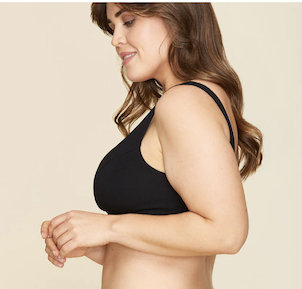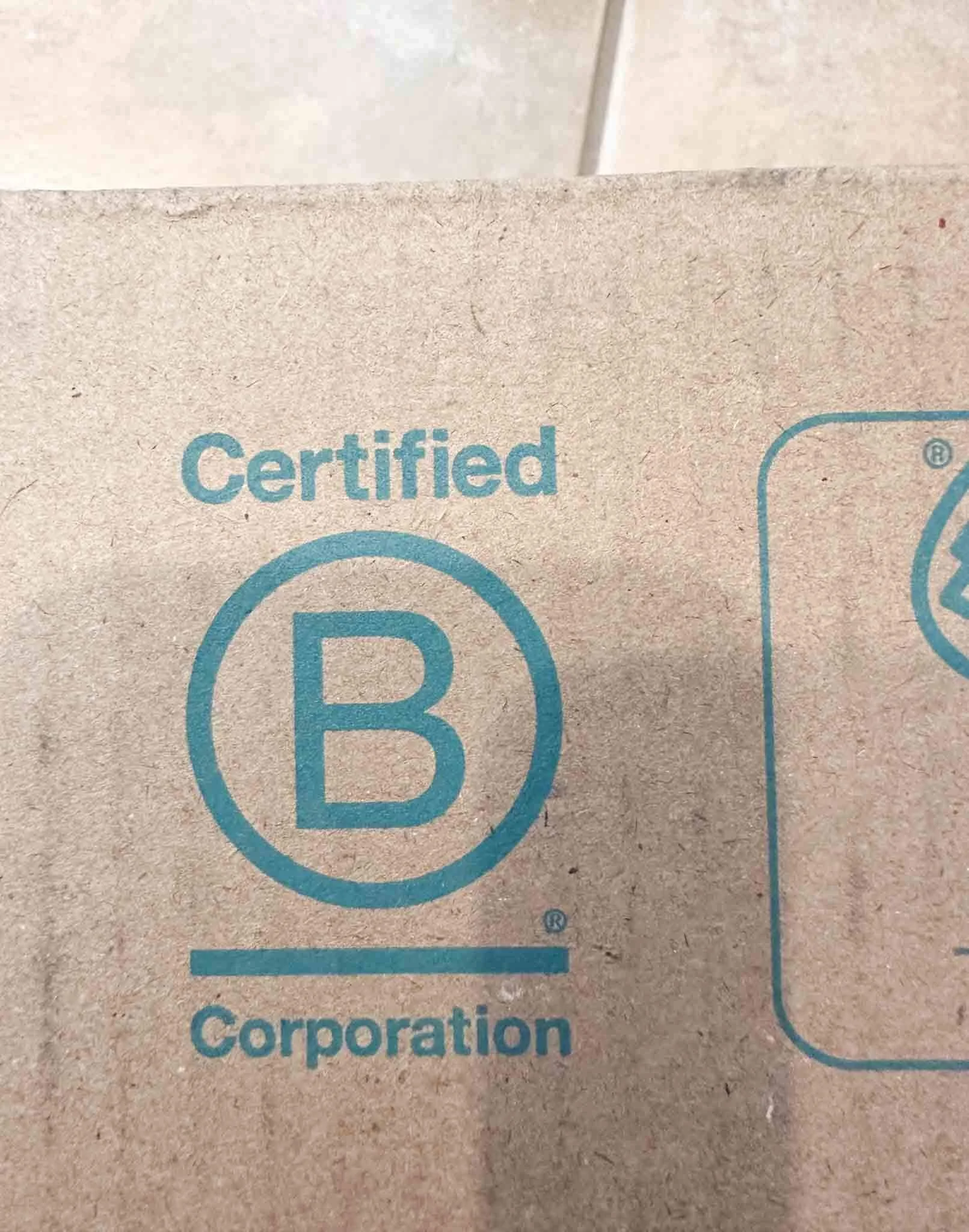How to Recycle Old Clothes Sustainably
When you’re doing a closet clear-out it’s important to know what to do with the old clothing you're done with and where to dispose of the clothes responsibly. The average person in the United States throws away as much as 81 pounds of clothing every year.
That's a heaping environmental impact!
While we can all relate to the refreshing feeling of cleaning out our closets, let’s explore how to recycle old clothes, the sustainability of donating clothes, and textile recycling, so you can confidently clean out your closet in the best way.
This post does contain some affiliate links which means The Honest Consumer may receive a commission if you decide to purchase, however, at no additional cost to you!
How to Get Rid of Old Clothes Responsibly
There are many different ways to dispose of old clothes that ensures they won’t end up in a landfill.
There are also a lot of things that companies can do with old fabric that don’t involve reselling the item. Depending on the quality of your garment, you can decide which one is right for you.
Is Reselling Clothes Sustainable?
Yes, if your clothes are in good condition, why not resell them yourself online? Along with your local consignment store, there are loads of sites that can help facilitate this, plus you’ll get a bit of money back as well!
This is a great way to put a bit of cash in your pocket, give your clothes a longer life, and ensure your clothes don’t end up in the landfill. I personally use Poshmark.
Is Donating a Sustainable Way to Dispose of Old Clothes?
Donating is the other big option for recycling clothes, but it’s not always as sustainable as we think.
There are a few options here, whether it’s through a donation bin, salvation army, local thrift store, or a specific charity of your choice. Not all drop-off locations, local charities, or thrift shops are the same, though.
Always do your research to find out which one is best for you. Make sure the items you donate are items the organization will actually use and are in good condition so they don’t just end up in the landfill.
Some animal shelters take old blankets, towels and linens, but it's best to check ahead of time.
What Happens to Clothing Donations?
If you’re donating to a traditional thrift store, your clothes will likely be put up for sale if they are in good condition.
About 5% of clothes donated do go straight to landfill – however this is usually due to them being damp, moldy, or excessively stained, or with broken zippers and a missing button or two.
What Happens to Donated Clothes That Don’t Sell?
The fact is, only 10-20% of donated clothes actually get sold. Goodwill for example, will have your items on the store floor for four weeks. If they are not sold by this stage, they may go to a discount store.
The best thrift and charity stores don’t send these items to landfill but sell them on elsewhere, whether to charitable organizations overseas or in bundles for textile recycling.
However, it’s hard to know because most thrift stores are not transparent about what happens to their unsold, unwanted items.
And it’s not the responsibility of countries overseas to be responsible for unwanted clothes as a result of our overconsumption. Let’s explore some other options such as textile recycling.
What is Textile Recycling?
Textile recycling is where clothes are broken down and turned into something new, instead of sending tons of textiles to the landfill. There are companies out there that can make brand new clothes from the fibers of your old t-shirts.
However, at the moment, this is very difficult to do with only 1% of textiles turned into new items.
Why? Well, clothing made with mixed fibers usually can’t be recycled this way.
The best material is cotton, and then only when the item is made 90% cotton. Yet technology is always improving, so hopefully we’ll see more and more of this in the coming years, especially for synthetic fibers.
The other method of textile recycling is much more common. While it doesn’t make new t-shirts, it prevents garments being thrown into the landfill.
Clothing is cut into rags and repurposed for industrial waste, or to make housing insulation and carpet padding.
Top Tips for Choosing Where to Recycle Clothes
If you have clothing that you know is in good condition, then there’s no reason why someone else can’t love it – even if you’ve only worn it once! Here are a few top tips to finding the best new home for your unwanted clothing.
Be critical. It may be an old favorite, but is it really in good enough condition to be worn again? If not, look into donation bins or textile recycling, instead of second-hand.
Try to find a specific charity that deals with your item. There are charities for formal wear, kids clothing, and even bras! This will give your item the best chance at a new life.
Choose a local charity that recycles – no matter what. If your item isn’t sold, then you want to ensure that it doesn’t end up in the landfill. Make enquiries into what happens to unsold clothes. Textile recycling is a good alternative to more landfill waste.
Host a clothing swap with your neighbors and friends. Everyone brings their gently worn items and rehomes them with other guests! This is an easy way to find new pieces for yourself and put your old ones to good use! You can also include household items in the swap.
Where to Responsibly Donate Formal Wear?
The thing about formal wear is that it rarely gets worn more than once. While it’s tempting to keep beautiful dresses and interview attire in your wardrobe to just… admire from time to time, this isn’t beneficial.
Not only is it taking up space, but the older the item, the less likely it is to be sold. Luckily, there are two charities specifically for formal wear that I just love.
Brides for a Cause: Donate Your Wedding Dress
Brides for a Cause is a non-profit organization that have stores in Portland, Tacoma and Seattle. They collect and resell wedding dresses (currently 5 years and newer).
With the money that make, 90% is donated to a range of women’s charities every year. So not only will your wedding dress get a new lease of life, it will also help those in need.
Dress for Success: Donate Your Formal Wear
Dress for Success accepts nearly new women’s wear that is contemporary, seasonal, and career-appropriate, as well as handbags, shoes, and jewelry. Based in New York, they have a vison of a world where women are economically empowered and inspired to create change.
Where to Responsibly Donate Undergarments
We’ve all bought a bra that either doesn’t fit correctly or is just painful to wear. The pervading statistic is that 80% of women are wearing the wrong bra. Why?
Because there are no realistic size standards. So, what do we do with all of these unwanted bras? Well, here are three charities that would love to take them off of your hands.
Her Drive’s Women’s Products
Her Drive is a Chicago-based nonprofit organization that provides bras, menstrual care, and general hygiene products to people in need. They accept donations of new/gently used bras and bralettes as well as a host of other hygiene products.
Bra Recycling with The Bra Recyclers
The Bra Recyclers are committed to sustainability and reducing landfill waste – as well as helping women escaping domestic violence or trafficking situations. Specializing in bras and other lingerie, this recycling company gives old bras a second chance.
Free the Girls
Free the Girls exists to help women rescued from sex trafficking reintegrate into their communities.
How? By helping them to set up businesses selling new and gently used bras. With donation centers across North America, you can donate your lingerie to a really worthwhile cause.
Textile Recycling Programs to Check Out
If you know that your clothes aren’t likely to be resold, then perhaps it’s time to look directly at some textile recycling programs. This can give your garments a new life, and if it’s the right material, they may even be made into something new!
Marine Layer T-shirt Recycling
Marine Layer’s Re Spun program converts your old t-shirts into brand new textiles. Promoting a circular economy and preventing unnecessary landfill waste, their Re Spun textiles are made with 30% to 100% recycled material.
Now that’s a project we can get behind.
Marine Layer
Knickey Underwear Recycling
Knickey is doing something really innovative – recycling your underwear. The items that you never thought would have a use again are transformed into insulation, carpet padding and furniture batting.
Plus when you donate, you get a free pair of organic cotton undies! Knickey’s accepts any brand of underwear for recycling.
Thredup’s Rescue Boxes
ThredUP already sells second-hand clothes, but for those that have been on their site a while, or that don’t pass their selling standards, they have rescue boxes. These are heavily discounted boxes of garments available for purchase.
Recycle Old Jeans with Blue Jeans Go Green
Blue Jeans Go Green accepts all of your unwanted denim that is 90% cotton. As cotton is a sustainable fiber, it can be recycled back to its natural state and transformed into something new. It’s made into building insulation, thermal packaging insulation, and even pet bed inserts.
Hopefully this guide has shown you a little more about how to recycle old clothes and avoid pounds of textiles getting sent to landfill.
For more ethical & sustainable fashion tips be sure to follow The Honest Consumer on social media, subscribe to our newsletter, & check out the Ethical & Sustainable Brand Directory.


























